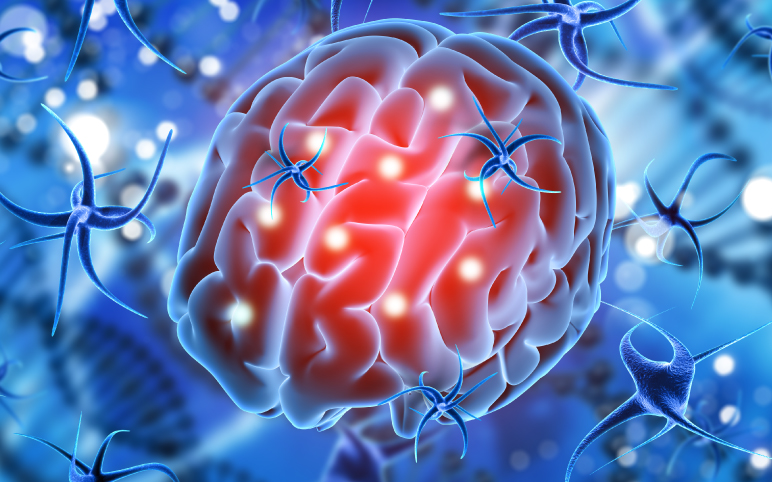Evaluation of the Advancing Developmental and Epileptic Encephalopathy Treatment Pipeline
May 23, 2022
Table of Contents
Developmental and Epileptic Encephalopathy (DEE) refers to a group of severe epilepsies that are characterized both by seizures, which are often drug-resistant, as well as encephalopathy, which is a term used to describe significant developmental delay or even loss of developmental skills. In Developmental and Epileptic Encephalopathy, cognitive functions are influenced severely by seizures and interictal epileptiform activity, also by the neurobiological process behind Epilepsy. DEEs are also related to gene variants and the onset is usually during early childhood. The effect of seizures on cognitive function is partially dependent on the period of brain maturation in which the seizures occur, which in turn, is dependent on other factors, such as underlying pathology, genetic susceptibility factors, and seizure triggers (e.g., febrile illness). While cognitive impairments are often a consequence of the underlying pathology, independent of seizures, it is also important to recognize that seizures themselves also play a role in developing cognitive impairments.
The syndromes of neonatal-onset epileptic encephalopathy, infantile epileptic encephalopathy, and early childhood include early myoclonic encephalopathy, Ohtahara syndrome, West syndrome, Dravet syndrome (severe myoclonic epilepsy in infancy), Lennox–Gastaut syndrome (LGS), Landau–Kleffner syndrome (LKS), Epilepsy with continuous spike-and-waves during slow-wave sleep (ECSWS), Doose Syndrome (myoclonic atonic epilepsy), CDKL5 deficiency disorder (CDD), Tuberous sclerosis complex (TSC), SCN8A-Developmental and Epileptic Encephalopathy, and KCNQ2-Developmental and Epileptic Encephalopathy.
Downloads
Click Here To Get the Article in PDF
Recent Articles
The approach to Epileptic Encephalopathy treatment includes some of the general principles and approaches to pediatric epilepsy treatment. The most appropriate anti-epileptic treatment is selected based on the type of epilepsy syndrome. Antiseizure medications includes clobazam, vigabatrin, zonisamide, phenobarbital, benzodiazapines, vigabatrin, and others are used for Developmental and Epileptic Encephalopathy treatment. Steroids therapies, vagus nerve stimulation, ketogenic diet and epilepsy surgery are also used for Developmental and Epileptic Encephalopathy management.
Developmental and Epileptic Encephalopathy Epidemiology and Statistics
According to various studies by DelveInsight, it is observed that Developmental and Epileptic Encephalopathy prevalence is higher in men as compared to women. As per an analysis, the total diagnosed prevalent population of Developmental and Epileptic Encephalopathy in the 7MM was observed to be 235,157 in 2021. Epidemiology assessment for DEE indicated that the United States, in 2021, accounted for approximately 129,437 diagnosed prevalent cases of DEE, which was the highest among the 7MM.
DelveInsight estimates that in the EU5 countries, the diagnosed prevalent population of Developmental and Epileptic Encephalopathy was maximum in Germany with 21,041 cases, followed by France with 17,258 cases in 2021. While the least number of cases were in Spain, with 11,743 cases in 2021. Whereas, Japan accounted for 23,798 diagnosed prevalent DEE cases in 2021.
Developmental and Epileptic Encephalopathy Market Insights
The dynamics of the Developmental and Epileptic Encephalopathy (DEE) market are anticipated to change in the coming years owing to the improvement in the diagnosis methodologies, raising awareness of the disease, incremental healthcare spending across the world, and the expected launch of emerging therapies during the forecast period. Key players such as Epygenix, Xenon Pharmaceuticals, Longboard Pharmaceuticals, Stoke Therapeutics, Takeda/Ovid Therapeutics, SK Life Science, Neurocrine Biosciences, Praxis Precision Medicines, Jazz Pharmaceuticals, Biocodex, Zogenix (Acquired by UCB), Lundbeck, Marinus Pharmaceuticals, Novartis, Aquestive Therapeutics, Supernus Pharmaceuticals, Lundbeck, Eisai Pharmaceuticals, GlaxoSmithKline, Meda Pharmaceuticals, Roche, Questcor Pharmaceuticals, Mallinckrodt Pharmaceuticals, BioPharm Solutions, and others are involved in developing Developmental and Epileptic Encephalopathy treatment.
As per an analysis by DelveInsight, the Developmental and Epileptic Encephalopathy market size is estimated to be USD 1,371 million in 2021, which is expected to show a positive growth at a CAGR of 15.5% during the study period 2019–2032. The United States accounts for the largest Developmental and Epileptic Encephalopathy market size in comparison to EU5 and Japan, which was estimated to be USD 1,030 million in 2021.
Among the EU5 countries, Germany had the highest Developmental and Epileptic Encephalopathy market size with USD 72 million in 2021, while Spain had the lowest market size with USD 45 million in 2021. The Developmental and Epileptic Encephalopathy (DEE) market for Japan accounted for USD 53 million in 2021.
Current Developmental and Epileptic Encephalopathy Treatment Landscape
The approach to the Epileptic Encephalopathy treatment guidelines are similar to pediatric epilepsy treatment. The most appropriate anti-epileptic treatment is selected based on the type of epilepsy syndrome. Anti-seizure medications are routinely used, but some types of seizures are usually difficult to control. It is the primary way in which epileptic seizures are controlled and is almost always the first class of therapy medications. Steroid therapy with Adrenocorticotropic hormone (ACTH) or prednisone has been helpful in some children. In the patients, a vagus nerve stimulator or the ketogenic diet may also be considered when medicines do not work well.
Epidiolex (Cannabidol) developed by Jazz Pharmaceuticals, formerly GWP42003-P, also known as Epidyolex in Europe, is the first prescription, plant-derived cannabis oral formulation developed by GW pharmaceuticals. It is a novel class of antiepileptic medications with a different mechanism of action. It has been approved in the US and Europe for seizure treatment associated with LGS or Dravet syndrome in patients 2 years of age and older. Epidiolex is the first FDA-approved drug that contains a purified drug substance derived from marijuana, and the active ingredient is cannabidiol (CBD).
Diacomit (Stiripentol) by Biocodex is another FDA-approved drug for the treatment of seizures associated with Dravet syndrome in patients 2 years of age and older taking clobazam. It is an original anti-epileptic drug resulting from Biocodex’s research program, which was approved in August 2018.
In March 2022, UCB announced the US FDA approved Fintepla (Fenfluramine), an oral solution for seizure treatment associated with LGS in patients 2 years of age and older. Fintepla developed by Zogenix and now acquired by UCB is a low-dose solution of fenfluramine hydrochloride. It prevents the entry of calcium ions into nerve cells, lowering their over-excitability and reducing seizure episodes. It also activates serotonin receptors, which contributes to the overall antiepileptic action.
Recently, on March 18, 2022, Ztalmy (ganaxolone) developed by Marinus Pharmaceuticals, was FDA approved to treat seizures associated with cyclin-dependent kinase-like 5 (CDKL5) deficiency disorder (CDD) in patients 2 years of age and older. This is the first treatment for seizures associated with CDD and the first treatment specifically for CDD.
Browse through our Infographics section to know more about cyclin-dependent kinase-like 5 (CDKL5) deficiency disorder
Steroid therapy with Adrenocorticotropic hormone (ACTH) or prednisone has been helpful in some children. Steroids are often an effective treatment for West’s syndrome. Prednisolone is a glucocorticoid similar to cortisol used for its anti-inflammatory, immunosuppressive, anti-neoplastic, and vasoconstrictive effects. The short-term effects of corticosteroids are decreased vasodilation and permeability of capillaries, as well as decreased leukocyte migration to sites of inflammation. ACTH promotes the release of glucocorticoids, and most ACTH effects on the central nervous system have been attributed to the activation of glucocorticoid receptors.
Epilepsy surgery may be an option in children with seizures starting in one area or involving one side of the brain. In these situations, a focal resection (removal of one area) or a hemispherectomy (removing most of one side of the brain) may be considered.
The current Developmental and Epileptic Encephalopathy treatment is mainly dominated by the use of Anti-epileptic drugs (AEDs) which are the early treatment choice for almost all patients with multiple seizures. Expected Launch of potential therapies Epygenix (EPX-100), (EPX-200) (Lorcaserin) and (EPX-300), Neurocrine Biosciences (NBI-921352) (XEN901Xenon Pharmaceuticals (XEN 496), Takeda (Soticlestat) (OV935/TAK-935), Praxis Precision Medicines (PRAX-562), and others may increase Developmental and Epileptic Encephalopathy market size in the coming years, assisted by an increase in Developmental and Epileptic Encephalopathy population.

Emerging Drugs in Developmental and Epileptic Encephalopathy Pipeline
The current therapeutic landscape of Developmental and Epileptic Encephalopathy (DEE) is driven by treatment practices and the expected launch of emerging therapies. Besides, these Developmental and Epileptic Encephalopathy therapies are expected to combat the current unmet needs faced by the patients and add to the overall growth of the Developmental and Epileptic Encephalopathy market size. Many key Developmental and Epileptic Encephalopathy players such as Epygenix, Longboard Pharmaceuticals, Xenon Pharmaceuticals, Stoke Therapeutics, and others are involved in developing Developmental and Epileptic Encephalopathy treatment therapies which include some of the following -
Epygenix’s lead product candidate, EPX-100, is a repurposed antihistamine which was used in the past to treat itchiness. The medication can suppress seizures via modulation of serotonin (5HT) signaling pathways, which is different from its anti-histaminic properties. Currently, the drug is in Phase II trial as a single pivotal study to compare the efficacy of EPX-100 against placebo as adjunctive therapy in 60 patients with Dravet Syndrome. Apart from this, EPX-100 is also evaluated as a single pivotal study in the Phase II trial as Adjunctive Therapy in Children with LGS. Moreover, the company is also investigating EPX-200 and EPX-300 for Dravet syndrome and LGS. Furthermore, these drugs can progress directly into Phase III trials and pursue approval. In addition to that, Epygenix expects to start the Phase III trial for EPX-200 and EPX-300 in the first half of 2022.
XEN496 is a pediatric formulation of ezogabine (retigabine), a neuronal KCNQ (Kv7) potassium channel modulator under development by Xenon Pharmaceuticals as a precision medicine treatment for KCNQ2-related neonatal developmental and epileptic encephalopathy (KCNQ2-DEE). Moreover, a Phase III randomized, double-blind, placebo-controlled, parallel-group, multicenter clinical trial, called the “EPIK” study, is underway to evaluate the efficacy, safety, and tolerability of XEN496 administered as adjunctive treatment in approximately 40 pediatric patients aged 1 month to less than 6 years with KCNQ2-DEE. Xenon anticipates that the EPIK study (NCT04639310) will be completed in the first half of 2023.
LP352 by Longboard Pharmaceuticals is an oral, centrally acting, 5-HT2c superagonist in development for the potential treatment of seizures associated with DEEs such as Dravet syndrome, LGS, tuberous sclerosis complex (TSC), CDKL5 deficiency disorder (CDD), and other epileptic disorders. LP352 is designed to modulate GABA and, as a result, suppress the central hyperexcitability that is characteristic of seizures. LP352 is the only 5-HT2c receptor superagonist being dose-optimized for the refractory epilepsy population.
STK-001 is developed by Stoke Therapeutics, which is an investigational new medicine for Dravet syndrome treatment. It is a proprietary antisense oligonucleotide (ASO) and has the potential to be the first disease-modifying therapy to address the genetic cause of Dravet syndrome. The drug is designed to upregulate NaV1.1 protein expression by leveraging the non-mutant copy of the SCN1A gene to restore physiological NaV1.1 levels, thereby reducing both occurrences of seizures and significant non-seizure comorbidities. This RNA-based approach is not gene therapy but rather RNA modulation, as it does not manipulate nor insert genetic deoxyribonucleic acid (DNA).
Soticlestat (OV935/TAK-935) by Takeda/Ovid Therapeutics is a potent, highly-selective, first-in-class inhibitor of the enzyme cholesterol 24-hydroxylase (CH24H), with the potential to reduce seizure susceptibility and improve seizure control. CH24H is predominantly expressed in the brain, where it plays a central role in cholesterol homeostasis.
In addition to these, there are many other companies that are investigating their lead candidate for Developmental and Epileptic Encephalopathy treatment including PRAX-562 (Praxis Precision Medicines), JBPOS0101 (BioPharm Solutions), XEN901 (Neurocrine Biosciences), and others.
Unmet Needs in Developmental and Epileptic Encephalopathy Treatment Domain
The rare epileptic syndromes, such as LGS, Dravet Syndrome, and CDKL5 deficiency disorder, are extremely complex and heterogeneous diseases with multiple etiologies, resulting in several epilepsy diagnosis challenges as the disease evolves through time. Also, there is a lack of agreed recommendations on the screening and treatment of comorbidities in rare epilepsies. Anti-seizure drugs are currently the standard of care, although they merely treat Developmental and Epileptic Encephalopathy symptoms and do not address the disease’s underlying cause. In addition, there are no approved therapies for the majority of Developmental and Epileptic Encephalopathy types, and off-label choices are associated with poor results, safety, and tolerability. In addition to that, the approved drugs like Fintepla and Ztalmy might deal with high cost of treatment.
Way Ahead
Ztalmy, the first licensed therapy for CDKL5 Deficiency Disorder, was recently FDA approved in the United States boosting the growth of the Developmental and Epileptic Encephalopathy market. The current competitive scenario of Developmental and Epileptic Encephalopathy is only restricted to a few therapies. A lack of many approved therapies have created a vacuum of licensed medications that will be filled by further R&D advancement. Emerging drugs with improved seizure control may positively impact the DEE treatment landscape and patients’ quality of life. With robust uptake, Epidiolex and Fintepla continue to add new prescribers and increase their existing prescriber base. Currently, the Developmental and Epileptic Encephalopathy market seems to be an unexplored area by pharmaceutical companies, and thus the companies have a significant opportunity to grab the potential Developmental and Epileptic Encephalopathy market space.

FAQs
Developmental and epileptic encephalopathy is considered to be a seizure disorder characterized by a type of seizure known as infantile spasms. The spasms usually appear before the age of 1.
The most common Epileptic Encephalopathy cause in infancy are structural abnormalities, either congenital (such as malformations of cortical development) or acquired (such as hypoxic-ischemic insults).
Developmental and Epileptic Encephalopathy prognosis is very poor. Usually described as a progressive and untreatable disease, this rare disease is also associated with severe physical and cognitive disabilities and unexplained death.
The EEG often evolves to atypical hypsarrhythmia which is transient or multifocal spike and sharp waves 3-4 months after the onset of the disease. The diagnosis of these epileptic encephalopathies begins with an EEG which should include both the sleep and wake states.
Downloads
Article in PDF



